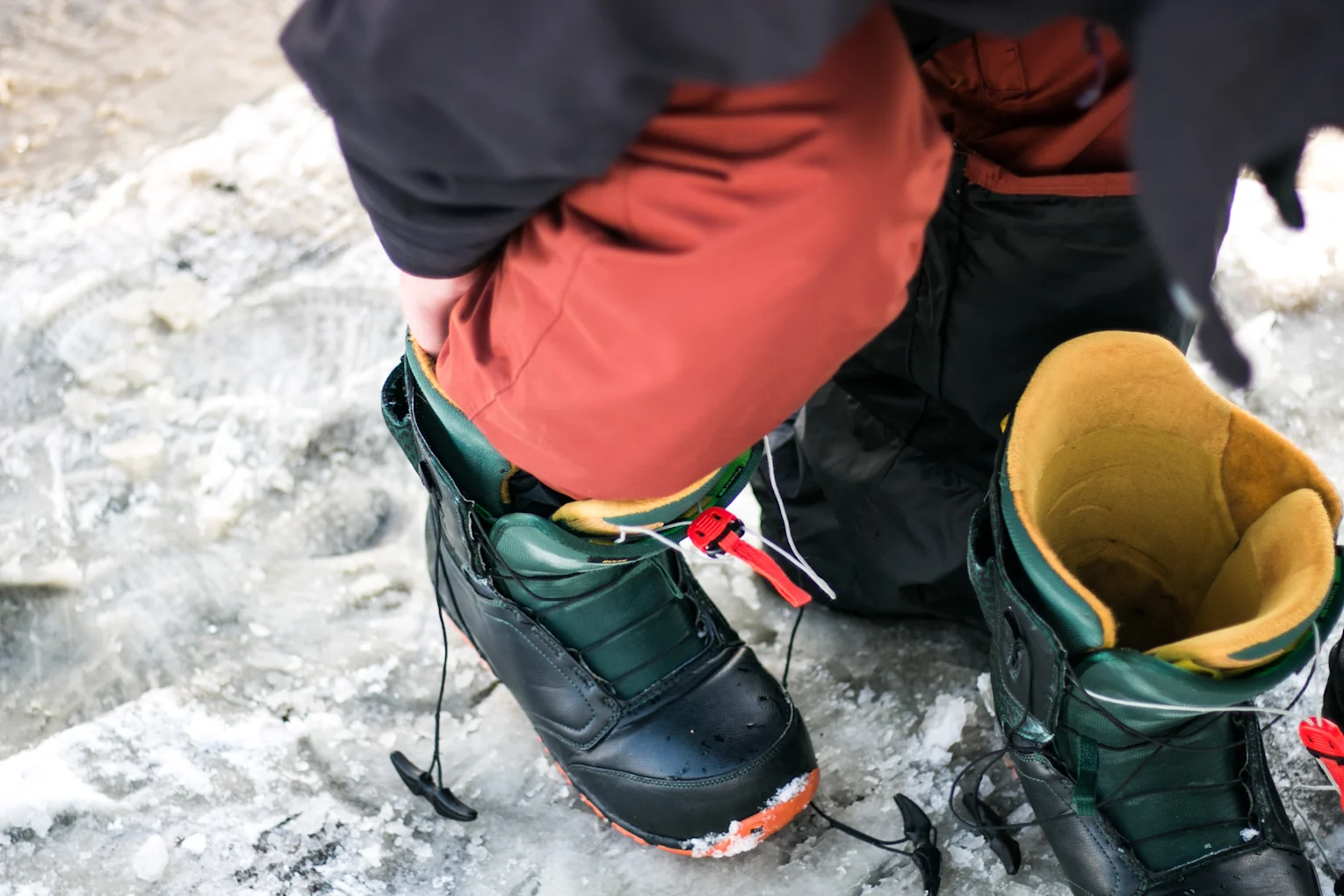As any seasoned snowboarder will attest, the importance of well-fitting boots cannot be overstated when it comes to conquering the mountain. The right snowboard boots not only provide crucial support and comfort but also significantly impact your overall performance and safety as you barrel down the hill. Finding the perfect fit is more than just a matter of comfort; it's about ensuring optimum control, responsiveness, and stability during those exhilarating downhill runs. Whether you're a beginner or a seasoned pro, understanding the nuances of how snowboard boots should fit is paramount.

In this comprehensive guide, we'll explore the key aspects of achieving an ideal snowboard boot fit, considering factors such as foot spacing and snowboard boot lacing styles, so you can make informed decisions and enjoy an uncompromised and thrilling snowboarding experience.
Snowboard boot toe space and heel hold
Snowboard boots should fit snugly, but not to the point where they cause pain. In a good fitting boot your toes will gently graze the boot’s toecap and you should be able to wiggle your toes inside the boots.
Heel hold is another important factor. When your knee is driven forward your heel should remain in place; this is important for board control in toeside turns. Remember that socks also play a part in boot fit - a single thin to medium weight wool or synthetic sock is all you need. There is a fine line between a boot that is too tight or uncomfortable and one that is too loose and gives heel lift.
Snowboard boot sizing chart
You can use this handy boot sizer tool to double check the best fitting boot size according to your normal shoe size. Be aware that boot sizing can vary brand-to-brand so it’s best to double check the brand’s website to confirm proper fit and comfort.
Snowboard boots use traditional US number sizing, but actual boot sizes can vary by manufacturer and even by model within a single manufacturer's line. For example, the outsole of manufacturer A's size 11 might be slightly longer than the outsole of manufacturer B's size 11. Similarly, there are some boots specifically built with a low profile. The shorter outsoles of a low profile boot allows a rider to use a narrower snowboard. Additionally, the ramp angle on snowboard bindings also partially determines how large of a boot you can put on a particular snowboard.
Snowboard boot lacing systems
The lacing systems on boots varies as well, meaning there are different technologies used to get in and out of the boots, which is actually an important consideration with cold fingers putting them on or adjusting out on the hill.
Traditional Laces: These are aptly named and resemble the lacing systems of most high-top, winter or outdoor boots. This is very straight forward.
BOA Laces: This is a new type of lacing system that has grown in popularity recently. BOA boots allow the rider to adjust quickly and easily, using the dial system they have patented. Simply click the dial in place, and twist it to tighten. Then pop it open to loosen, easy as that! Boots with a BOA system are very easy to get on and off, and they can be adjusted on the fly, which is great for long days. Be aware though, that some folks claim they can’t get a custom fit with the BOA and it can be tricky to get it dialed in comfort-wise depending on your foot shape.
Pull System Laces: The other lacing system that has been sweeping the scene is the Pull-Systems. These vary brand to brand, but the general idea is that you use two pulleys to tighten the boot, pulling them up until you reach a desired tightness, and then locking the pulleys in place. This is a great system for those who want the convenience of the BOA but with a bit more customization in the fit, as you’d get with traditional systems.
In conclusion, the proper fit of your snowboard boots is crucial for an enjoyable and safe experience on the slopes. A snug yet comfortable fit is the key to maximizing your performance and minimizing the risk of injuries. If you're unsure about committing to a purchase, consider renting snowboard boots first from the GeerGarage community before making a long-term investment. With the right boots, you can confidently hit the snow-covered trails and take your snowboarding adventures to new heights.
